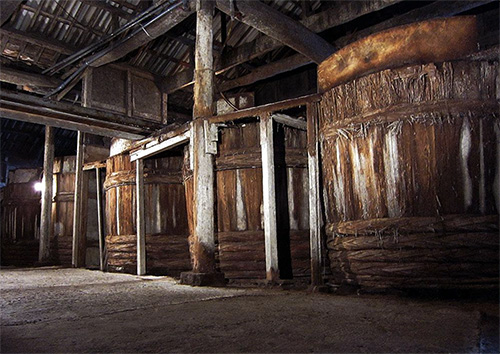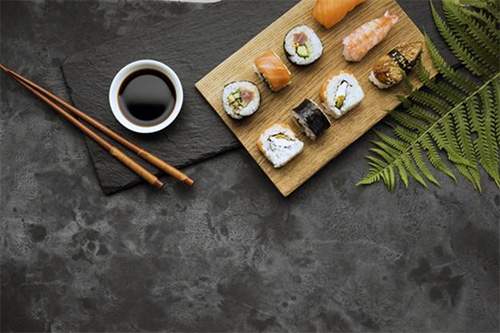Whether you are making a lip-smacking stir-fry, Shoyu ramen, or sushi, one of the key ingredients in your dish definitely has to be soy sauce. This essential flavoring ingredient is a part of many traditional cuisines in different Southeast Asian and East Asian cultures. Today soy sauce has found its use in modern cuisines worldwide, especially Japanese Soy Sauce.
No matter how similar they look, every soy sauce produced in different regions and cultures varies in consistency, smell, and taste. However, one of the most distinctive tasting soy sauces is made by the Japanese using Kioke barrels. There is an excellent reason for it; Kioke is the best vessel as the wood is thriving with beneficial microbes that are essential for fermentation.
So, what makes Japanese Soy Sauce better in quality and taste, or should we say shoyu sauce?
Let us look into the detail of how this century-old method is carried out and what makes it better than other production methods for shoyu.
What Is Kioke?
Kioke refers to barrels made of cedarwood, which have been used in Japanese culture since ages to store and prepare miso, sake, and soy sauce. It is way more than a mere container, the wood that it is made of is an excellent breeding ground for microorganisms like yeast that help facilitate fermentation. Soy sauce produced in these wooden barrels is of top-notch quality and has a distinctive taste.
What makes cedarwood the top choice for these barrels?
The answer lies in the microscopic pores that are present on the wood’s surface. These pores act as the perfect breeding and thriving ground for microorganisms that are the stars of the fermentation process. As moisture and air levels vary in the kioke barrels with age, the barrels’ internal appearance keeps changing. The older the barrel is, the better sauce it produces.
Therefore, artisans preferred 100-year-old Kioke wooden barrels to achieve the best soy sauce, authentic dark soy sauce with layered flavor.
How Is Soy Sauce Made Using Kioke?
The traditional method of producing soy sauce includes a lot of hard work and patience. Even though only a limited amount of simple ingredients are used in its making, the process itself is complex and lengthy.
- The first step involves soaking locally grown soybeans in water. After many hours, these thoroughly soaked soybeans are then steamed. Once this process is completed, the stewed soybeans are then transferred to a bamboo plate. They are then put away outside to rest for three days, where the fermentation process kicks off.
- Once they start getting moldy, they are then rinsed in water containing salt. Then they are dried and thoroughly mixed with previously roasted and cracked wheat. When this process is completed, the ingredients undergo mixing and pressing to achieve a paste-like consistency, which is then transferred to the wooden barrels where it can ferment.
- The fermenting process is quite long and takes around a year. During this period, the product is consistently monitored to ensure its quality. When this is completed, the paste is spread out on a fabric that is then covered and squeezed to obtain the soy sauce.
Many people attribute the complex flavor of the obtained sauce to the kioke, as it is rich in microorganisms and yeasts essential for the fermentation process.

Why Is Traditionally Produced Japan Soy Sauce Better?
Soy sauce is not just an ingredient used for enhancing flavor; it is much more than that. This is why it is best to invest in one that is produced using natural and traditional means. The soy sauce that is made using kioke barrels is rich in beneficial microorganisms that are, in turn, healthy for our bodies.
The generic soy sauce produced artificially contains chemicals and differs in taste and quality compared to the one that is made using the traditional way. Owing to the lengthy fermentation process and the exclusive flavor that the kioke imparts in the sauce, the traditionally produced soy sauce is hands down the best choice.
Once you taste the authentic Japanese Soy Sauce brewed and aged for years using the ancient method, you will know what an original Asian umami gourmet soy sauce tastes like.
Where Can You Get Traditional Japanese Soy Sauce From?
Once the Second World War ended, there was pressure on the Japanese producers of fermented foods to avoid using any wooden tool and resort to using stainless steel tanks. This is why kioke soy sauce availability is relatively low in the market and continues to get lower each year owing to the few numbers of artisans who can produce and manage wooden barrel soy sauce.
However, now this traditional method is being promoted so that the knowledge of fermented food is preserved and not lost as it is an integral part of Japanese culture.
But where can you find authentic kioke soy sauce from?
You will be happy to know that at Soysauce-Japan, we deal in high quality and authentic soy sauces that will leave you longing for more.
here is a wide range of available varieties on our website, and you can opt for one that suits your food purposes best. All of the sauces are made using the traditional method of kioke barrels, which ensures that each sauce is loaded with taste, texture, and health. Each sauce has its own history and culture that it takes its roots from and is handmade with love and care.

Choose Soysause-Japan For Your “Soy Sauce Japan” Needs
We understand the importance of a perfect soy sauce that adds a ton of flavor to any dish you cook. This is why make sure you invest in kioke soy sauce that is not only flavorful but also loaded with healthy benefits.
From dark soy sauce to light soy sauce, Soysauce-Japan has all authentic soy sauce brands in a one-stop Japanese Soy Sauce online store, and delivers the item in the USA.
So order your Japanese Soy Sauce now and brace yourself for that instant punch of flavor in your favorite Sashimi, Sushi, Shoyu ramen, and many more!
No added preservatives, artificial coloring, or fillers, just the purest and perfectly sweet and salty shoyu sauce.





